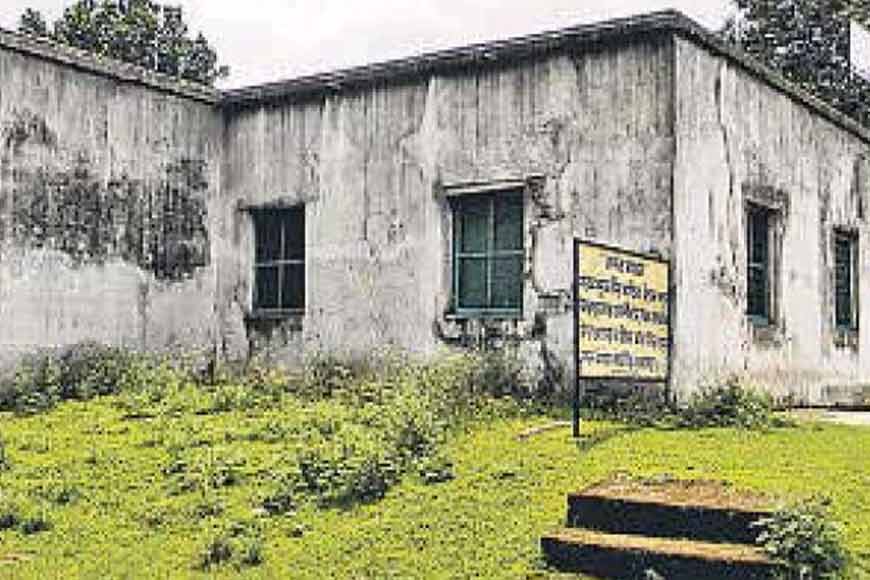Bengali-Bihari association of Karmatar preserves Vidyasagar’s house and turns it into a museum

Ishwar Chandra Vidyasagar (1820-1891) was one of the pillars of Bengal Renaissance who continued the social reforms initiated by Raja Rammohan Roy in the early 1800s. Poet Michael Madhusudan Dutta, while writing about Ishwar Chandra said: ‘The genius and wisdom of an ancient sage, the energy of an Englishman and the heart of a Bengali mother.’
Vidyasagar was a man with exceptional strength of character and self-respect. He had the guts to hold his own against high ranking British officials. Unshakable courage was the mettle of his success. So when his very own flesh and blood hurt him, Vidyasagar was shattered and decided to distance himself from his known world. He left the city in 1873-74 and migrated to Karmatar, a sleepy hamlet in Bihar to spend the last 18 to 20 years of his life in isolation and oblivion.
Vidyasagar bought a house at Karmatar for Rs 500 and moved in to be amid the Santhals at Nandan Kanan, Karmatar. Karmatar is a quaint little village, about 20 km from the district headquarters of Jamtara. The long association of Vidyasagar with Karmatar was a forgotten chapter till the Bihar-Bengalee Association members discovered it and decided to buy it and build it as a museum in memory of Vidyasagar. After Vidyasagar’s demise, his only son, Narayanchandra, sold the house to a businessman, who used the plot for floriculture. Many varieties of roses were grown here and exported to European countries. The house exchanged hands several times after that. Finally, the Bihar-Bengalee Association purchased the house in 1974 by paying Rs 24,000 to Singhdas Mallick sons -- Birendra Nath Mallick and Jitendra Nath Mallick, the then-owners of the house.
The purpose of procuring the property was to preserve the memory of this great scholar and extraordinary Renaissance man and save the sprawling Nandan Kanan, spread over 3 acres of land from the clutches of the land-sharks. The Bihar-Bengalee Association decided to buy the property and went for crowd funding. It sold Re 1 coupon to ordinary people and collected funds. The then chief minister of Bihar, Abdul Ghafoor, donated Rs 15,000 for the purpose.
Subsequently, the Bihar-Bengalee Association formed Vidyasagar Smrity Raksha Committee with noted litterateur Bibhuti Bhushan Mukhopadhyay as its president. The committee established Vidyasagar Balika Vidyalaya, which was recognised by the then Bihar government as an unaided minority school. Unfortunately, the school was shut down due to paucity of funds.
Emulating Vidyasagar who learnt and practiced homeopathy to treat the local Santhal tribals free of cost, the Smrity Raksha Committee set up ‘Vidyasagar Databya Homeopathic Chikitsalaya’ with financial support from Chameli Chatterjee of Jamshedpur, to provide free treatment to the locals. The Bihar-Bengalee Association went all out to appeal to the Railway Ministry through the Bihar government to christen the Karmatar railway station as Vidyasagar railway station.In 1993, a marble bust of Vidyasagar was laid on an erected pedestal at the place where Vidyasagar used to sit in the evenings. He was revered as God by the local Santhal populace, who still worship the cemented dais, marking the spot where their benefactor, Vidyasagar, sat and met them daily.
Since 2011, the Bengali Association has been organising ‘Smriti Tarpan’ programme named, ‘Guru Dakshina’ every year on March 29, the day Association acquired the property. Steps to develop Nandan Kanan as heritage site and a tourist spot was also initiated..
The Vidyasagar Smrity Raksha Committee has renovated the house, which was in a dilapidated condition when the Bihar-Bengalee Association purchased it. The wooden cot, used by Vidyasagar, has been put up for display in one of the seven rooms of the house. Vidyasgar’s life is shown in sketches in the other rooms. A separate guest house has been constructed within the campus for visiting scholars and guests.
However, a portion of the building is still occupied by one Mohan Mandal, who claims that his great grandfather, Kartik Mandal served Vidyasagar. But members of the Vidyasagar Smrity Raksha Committee insist that one Adhiram Mandal, assisted Vidyasagar and took care of his charitable work. Before the house was identified and bought, it used to be the local wing of the RSS and the members used the ground for their daily shakha drills.
At present, the refurbished and well-maintained house is a matter of great pleasure for the ‘probashi’ Bengalees who take pride to be part of the revival journey of Vidyasagar’s legacy at Jharkhand.









